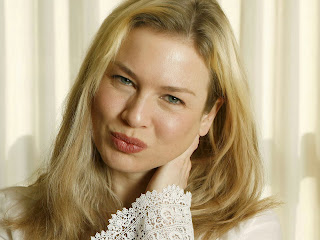Go 'way from my window
Leave at your own chosen speed
I'm not the one you want, babe
I'm not the one you need
You say you're lookin' for someone
Who's never weak but always strong
To protect you an' defend you
Whether you are right or wrong
Someone to open each and every door
But it ain't me, babe
No, no, no, it ain't me, babe
It ain't me you're lookin' for, babe.
Go lightly from the ledge, babe
Go lightly on the ground
I'm not the one you want, babe
I will only let you down
You say you're lookin' for someone
Who will promise never to part
Someone to close his eyes for you
Someone to close his heart
Someone who will die for you an' more
But it ain't me, babe
No, no, no, it ain't me babe
It ain't me you're lookin' for, babe.
Go melt back in the night
Everything inside is made of stone
There's nothing in here moving
An' anyway I'm not alone
You say you're looking for someone
Who'll pick you up each time you fall
To gather flowers constantly
An' to come each time you call
A lover for your life an' nothing more
But it ain't me, babe
No, no, no, it ain't me, babe
It ain't me you're lookin' for, babe.
So here we are on another Monday morning (it's an afternoon, actually, but that Daylight Savings thing always messes with my head). And I've got Dylan on my mind once again.
This song sticks in my head, as so many of his songs do. This was one that was picked up and covered by such diverse and unlikely recording artists as the Turtles, Johnny Cash, and even (inexplicably) Reese Witherspoon and Joaquin Phoenix. Why? Because WE can't write songs like that, even though we long to. We. Can't. That's. Why. We might as well not even try.
The reason I want to dig into this sere and juicy masterpiece is not because of those covers. This is usually viewed as one of Dylan's cruellest hit-and-run songs, a nasty one because of his (as I've touched on before) naked honesty, which can be breathtaking. It's said and widely believed that this song was aimed at his first great love, Suze Rotolo, the beaming girl glommed onto his arm on the cover of his second album, The Freewheelin' Bob Dylan. She was also "the creative one" in his notorious Ballad in Plain D (which, I must admit, is pretty strong in places, though I wasn't there to witness that awful midnight scene: "Beneath the bare lightbulb the plaster did pound/Her sister and I in a screaming battleground/While she in between, the victim of sound/Soon shattered as a child to the shadows.")
This one, though. Let's focus on it. The opening line immediately calls to mind one of those primal Appalachian ballads - or if it isn't Appalachian, it should be:
Go away from my door
Go away, way, way from my bedside
And bother me no more
And bother me no more
My sister used to sing this in a totally inappropriate, histrionic, quasi-operatic style drenched with pretentious mannerisms. ALL her songs were self-pitying and grim, with not one celebrating life or music or anything else. I call these her "I've been wronged and I'm not going to forget it" songs. But I digress.
Dylan seems to be building on that first line, but elaborates on his need to see the back of his lover once and for all. "Go 'way from my window" hooks us emotionally with that old (how old? We don't know, we only know it hooks us) song of mourning.
"Leave at your own chosen speed" seems pretty nasty - at first. But then look at it, lift it up, turn it over. Fast or slow, high or low - just go - but go slowly, he seems to be saying. Why slowly? Because this woman DOES NOT want to leave him. Obviously, she doesn't, or he would not have to sing this song. So her "own chosen speed" wouldn't be very fast - would it? It might just leave him enough time to change his mind.
"I'm not the one you want, babe/l'm not the one you need." This isn't really a "get lost" statement at all, but an acknowledgement of his own inadequacy. He goes on at length about this ("You say you're lookin' for someone. . ."), and seems to be listing his shortcomings. This illusive/elusive ideal is "never weak, but always strong", protecting and defending his lover whether she is "right or wrong": now is that fair, realistic, or even possible? And just who is it who can "open each and every door"? Obviously he's talking about someone who is making impossible demands on him, or perhaps exposing his vulnerabilities, which is pretty much the same thing.
It goes on like that: I'm not the one you want, babe/I will only let you down. But oh boy, here comes those lines that make Dylan seem like a total bastard: "Go lightly from the ledge, babe/Go lightly on the ground." Here he seems to be telling her something unthinkable: go jump out the window! But he doesn't mean that at all. Look at the word "ledge". It's a reference to that first line, and the way his spurned love keeps hanging around his windowsill in hopeless hope (and note it's not a door - a window into his soul, perhaps? Oh boy, it must be Monday.)
Then look yet deeper. It's not "off the ledge", is it? It's "FROM the ledge", as in "go 'way FROM my window", and moreover, he admonishes her to go "lightly", which you could not exactly do if you jumped out the window! No, I now think (and I just realized this moments ago when I cracked the walnut shell of this thing) "go lightly" means "leave, but with a light heart." Don't carry baggage from this. It'll only weigh you down. So "go lightly on the ground": walk with a light step. If you committed suicide, it wouldn't exactly be "lightly", would it? (And here's another meaning peeping out: "don't take this lightly," but in this case, "DO take it lightly", perhaps to spare her the kind of heartache he is feeling.)
All, some or none of this might be true. But it points to layered poetry, even in this, one of Dylan's "simpler" songs.
The verse goes on, each line piling on the demands she is making of him, so that each one seems more impossible than the one before. Is he feeling inadequate to the task? You tell me."Someone to die for you and more" - what "more" is there for him to do? But how much of this is true? If we're angry with someone we love, we accuse them of all kinds of shit they wouldn't even think of doing. We stack the deck against them to shore up our own weakness. What more do you want from me? I see evidence of a glass house here. What exactly did he expect of her? Was he performing that classic lover's ploy: reject her before she could reject him?
The most haunting lines are in the last verse: "Go melt back in the night" (echoing the gentle leavetaking of that "lightly off the ledge" line), a line that bespeaks a sort of illusion or beautiful dream evaporating into mist. "Everything inside is made of stone. There's nothing in here moving" - his emotions deadened by a loss he cannot accommodate - and, the one line that really looks like a slight, "and anyway, I'm not alone".
Dylan was almost never alone. I'm re-reading the several Dylan bios I have, and if ever a Lothario existed, it was him. I am sure he was unfaithful to Suze, in spite of her deep devotion to him: and in this, he may have felt inadequate, not good enough for her, and ready to defensively strengthen his own wobbly position any way he could.
And perhaps he was right: he wasn't worthy. This vibrant, intelligent woman, "the could-be dream lover of my lifetime", died of cancer in her early 60s, while Dylan still grinds along, his energy stretched thin like Bilbo's in The Hobbit because somewhere along the line, he grabbed the Ring of Power. He even told someone (was it Ed Bradley?) that early in his career, he made a deal with the devil.
And perhaps he was right: he wasn't worthy. This vibrant, intelligent woman, "the could-be dream lover of my lifetime", died of cancer in her early 60s, while Dylan still grinds along, his energy stretched thin like Bilbo's in The Hobbit because somewhere along the line, he grabbed the Ring of Power. He even told someone (was it Ed Bradley?) that early in his career, he made a deal with the devil.
So here is Joan Baez singing this hurt/hurting song so tenderly, it's heartbreaking. There's no rancour here at all, merely sadness and regret. Baez still sings Dylan's songs in her concerts, and Dylan always speaks highly of her in the rare interviews he gives. "I generally like everything she does," he said when she recorded a double album of his songs in the '70s. And to explain the casual way he ignored her on that infamous London tour, he says, "You can't be in love and wise at the same time."
For it was Baez who broke up Bobby and Suze. There's no mistaking. Whether she knew it or not, whether it was really Suze's trip to Italy that did it, whether it was Suze who told Bobby to take a hike and get out of her face, Baez stepped into the turmoil that erupted in Ballad in Plain D, and grabbed the prize. I think it was a melancholy victory, however, for she never really "had" him after all: Baez went to see him when she heard he was sick, and a strange woman answered the door, a gorgeous exotic creature who looked like a model.
She was. It was his new wife, Sara Lowndes, and Joan had had no idea he was married.
She was. It was his new wife, Sara Lowndes, and Joan had had no idea he was married.
No, no, no, it ain't me, babe.






















































